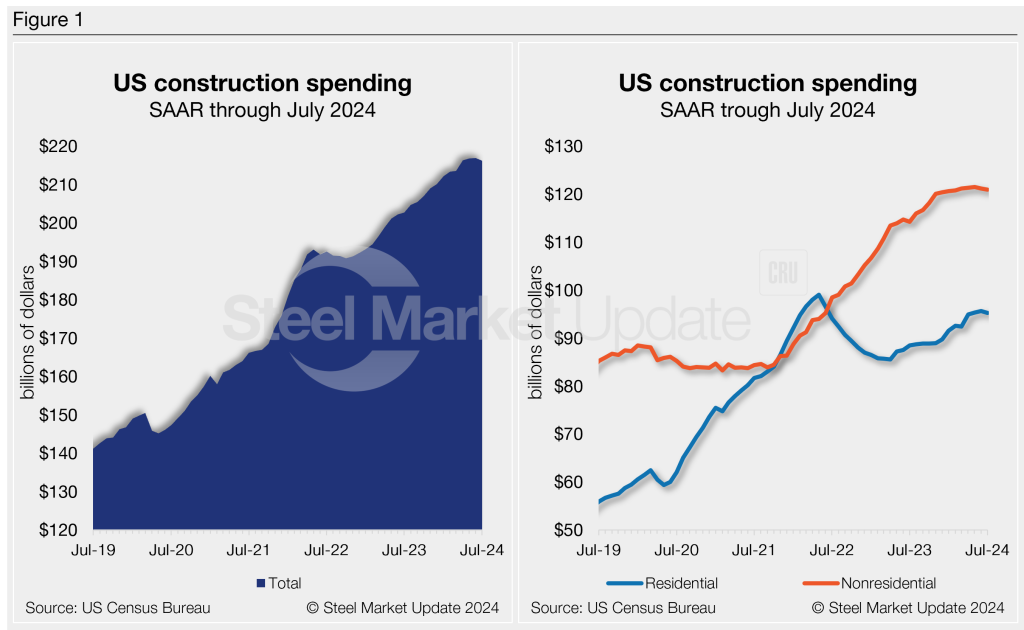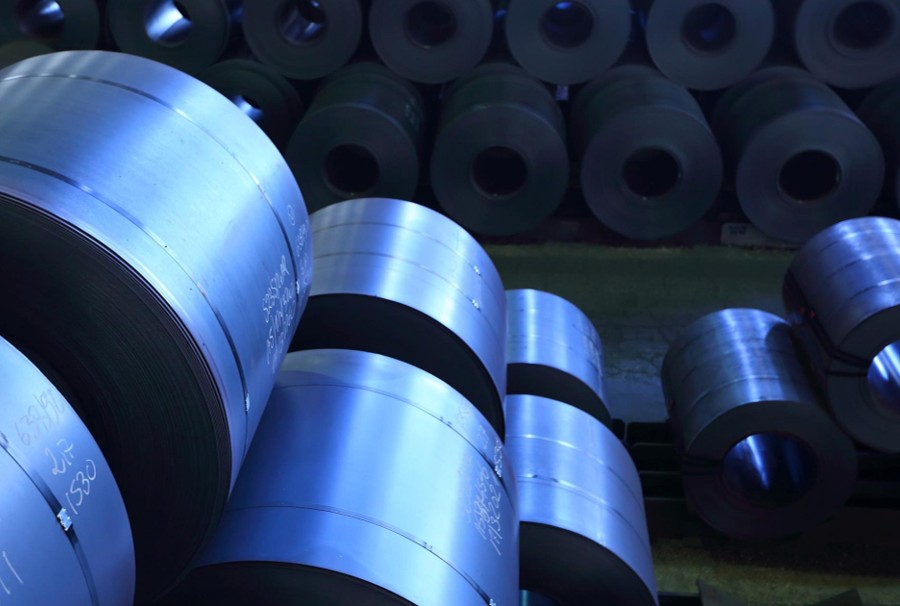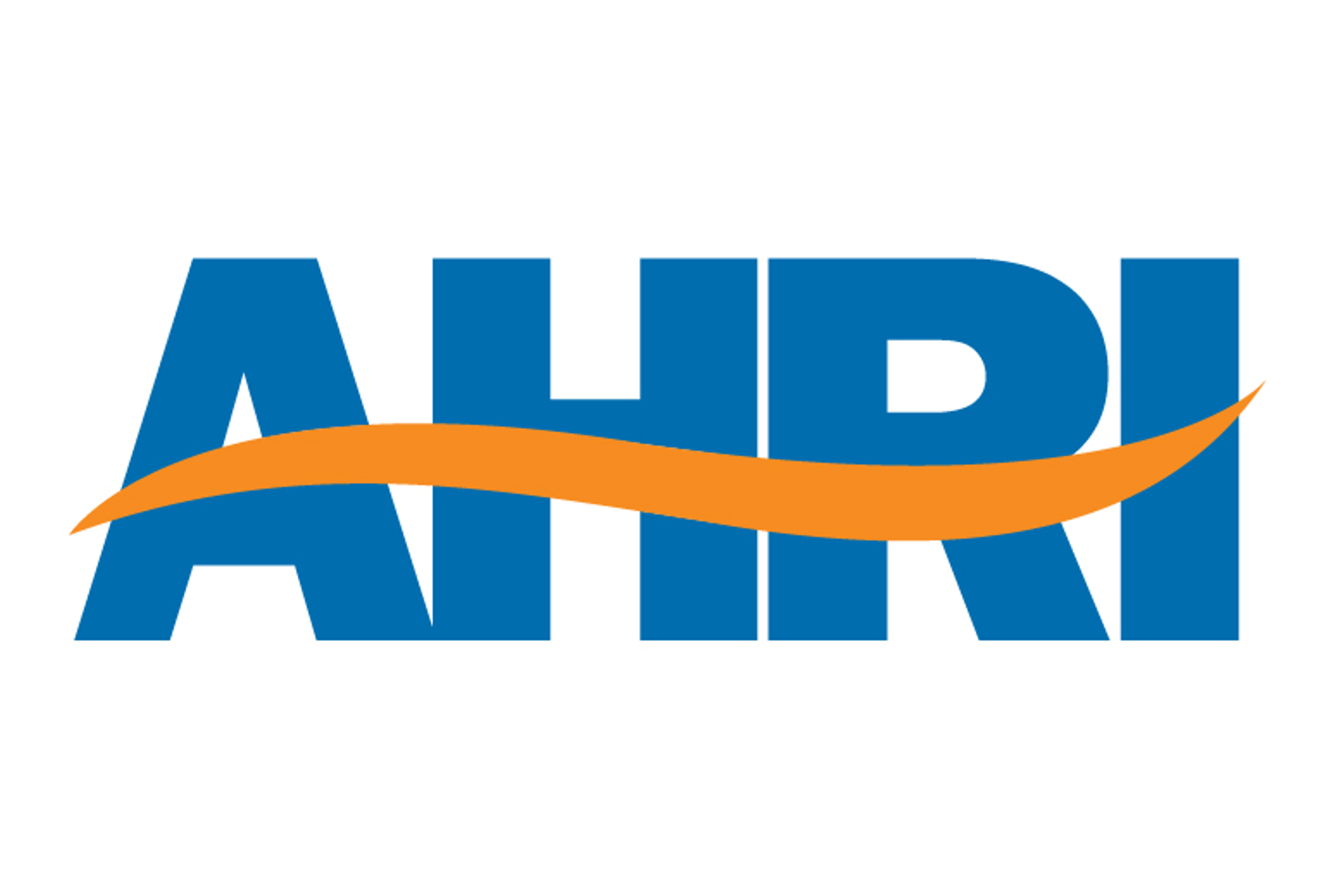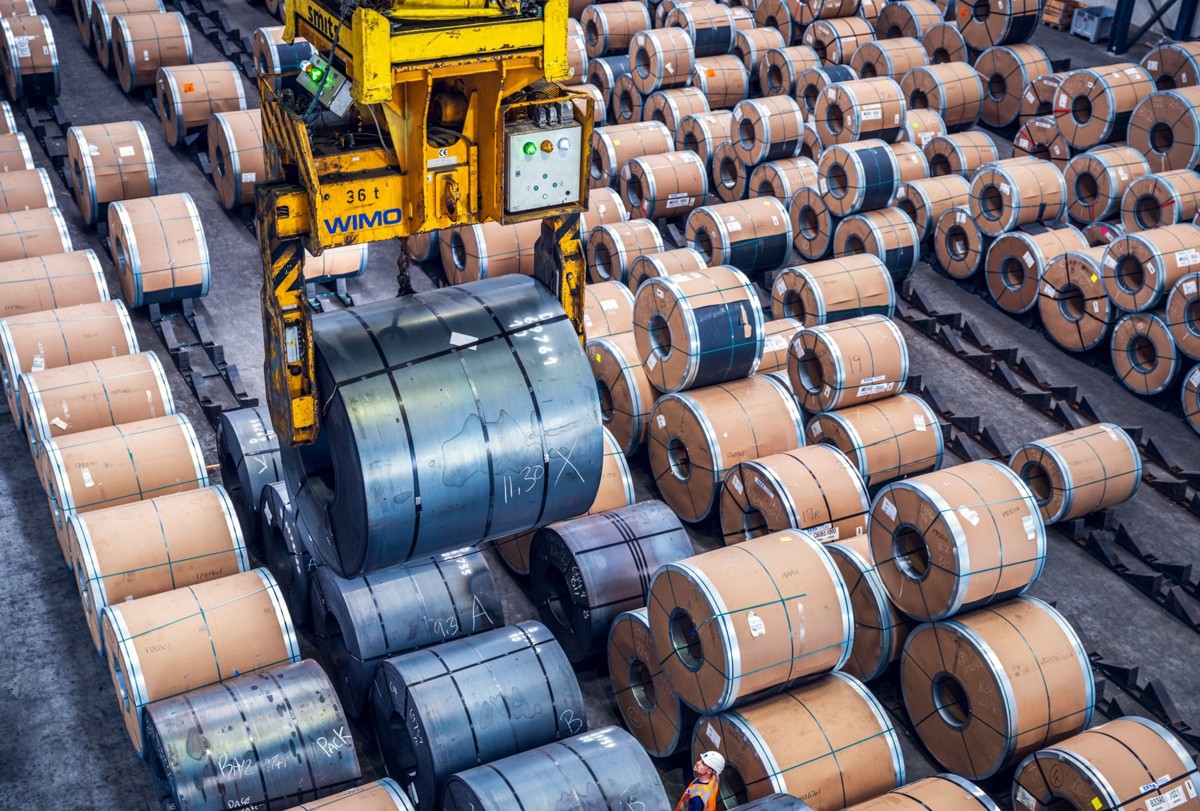Market Data
September 5, 2024
US construction spending slips in July
Written by David Schollaert
Construction spending in the US in July was slightly lower than June. Despite the decline, it increased notably year on year (y/y).
The US Census Bureau reported July construction spending to be an estimated $2.168 trillion on a seasonally adjusted annual rate (SAAR). While this was 0.3% below June’s revised spending rate, it was 6.7% higher than spending in July 2023.
Residential construction spending, at $941.6 billion in July, was off 0.4% month on month (m/m) but 7.7% higher y/y.
July spending on nonresidential construction projects was also marginally down vs. spending in June but was 5.9% higher than July 2023.
Within the nonres category, spending was highest on educational construction. Spending in this subcategory rose 0.9% m/m to $100.8 billion in July. State and local government spending slipped 0.1% and outlays on federal government projects jumped 2.1%.
Commenting on July’s data, the Associated General Contractors of America (AGC) noted, “Nearly all spending categories show increases from a year ago but have fluctuated in recent months.”
AGC added that while demand for construction remains elevated, demand for workers remains even stronger.
Census figures show total construction spending has been rising notably in recent years (see Figure 1). Spending on residential projects has more or less leveled out over the past year after peaking in 2022. At the same time, spending on nonresidential projects has been surging in recent years.








